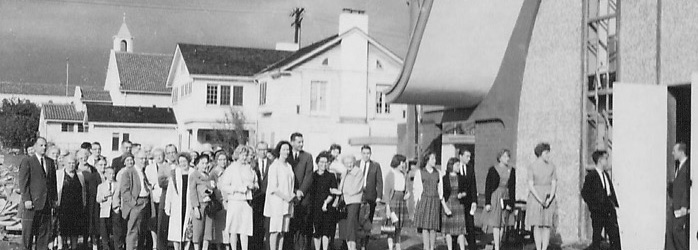Knox Presbyterian Church was first organized back in 1888 as a church plant from the United Presbyterian Church of Los Angeles. After meeting in homes for a few years, they built the first church on the corner of Colorado and Los Robles. The congregation grew and so did Pasadena. With the city of Pasadena moving to develop the area in 1924, the downtown location was sold in favor of a new French-Gothic building out in the “country” at 219 South Lake Avenue. Pasadena and Knox continued to expanded over the following years. Then in 1959, encroaching office developments persuaded the congregation to move to the current site, 225 South Hill Avenue, where the church building has been since 1962.
The sanctuary boasts a 24 rank organ with 1476 pipes rebuilt by a Knox member, a Steinway & Sons grand piano, and a multifaceted sound system to support the house band and ensembles that lead us in worship. There are beautiful images of the last supper and of bible scenes hand carved in wood relief by a Knox member on our communion table and main sanctuary doors. Along the north wall of the Sanctuary are stained glass scenes from the Lake Avenue church building. Also located on the Knox Campus is the historic Northside House, which has provided a warm and intimate setting for a variety of meetings and special events.
Through these many moves, the Knox congregation has been a community deeply involved in ministry around the world in addition to reaching out to local colleges and graduate schools. By the late 1990s, the congregation had declined in membership and was discerning how best to support their members and the work of God’s Spirit in their community. In 2003, the church was blessed with an influx of families with young children, bringing new leadership, vision, and broad age diversity to this church community. The growth continued in the years to follow, leading to the vibrant multi-generational congregation Knox is today. Over the past ten years, Knox has broadened its membership and its efforts to love our neighborhood and provide a place where people can become all that Christ has called them to be. Today, we hope to develop deeper relationships with the young adult communities in our neighborhood and care for immigrants, widows, and orphans both near and far.





























